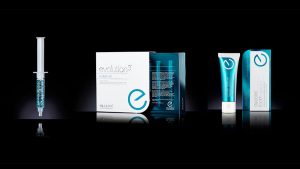Podcast: Play in new window | Download (Duration: 58:04 — 82.4MB)
Subscribe: RSS
Today, we will share with you some of the lessons that Dr. Avi Patel and I learned at the very beginning of delivering clear aligner treatment. If you’re just starting out, this is an excellent episode for you because it’ll help you avoid some of the pitfalls that we encountered. For example, best protocol for attachments or accurately estimating what level/complexity of aligner treatment is needed by a patient.
Protrusive Dental Pearl: Correct a rotated tooth by means of HYPERCORRECTION. This means adding a few extra clicks of rotation so that on the clincheck it looks like you have done a little bit too much. This works because orthodontic movements are NOT 100% predictable.
This episode is brought to you by Enlighten Smiles which is a premium brand of teeth whitening that guarantees B1 in your Viveras. If you want to know more about teeth whitening and get better results for your patients, do check out their webinar, Enlighten Online Training.
The Highlights of this episode:
11:39 Invisalign does not teach you Orthodontics
16:49 Basic rule in Orthodontics
21:49 Patient Communication regarding fees
26:59 Comprehensive Orthodontic Treatment
34:06 Refinement and Additional Aligners
38:02 Patient Communication in terms of treatment duration
41:23 Planning IPR – Best practices
43:53 Best Composite for Invisalign Attachments?
45:33 Protocol for Bonding Invisalign Attachments
If you’re finding a mentor to implement clear aligners at your practice, be sure to check out Clear Aligner Advisor also Dr. Avi’s YouTube Channel for some career advice.
If you liked this episode, you should check out Do’s and Don’ts of Aligners with Dr. Farooq Ahmed








